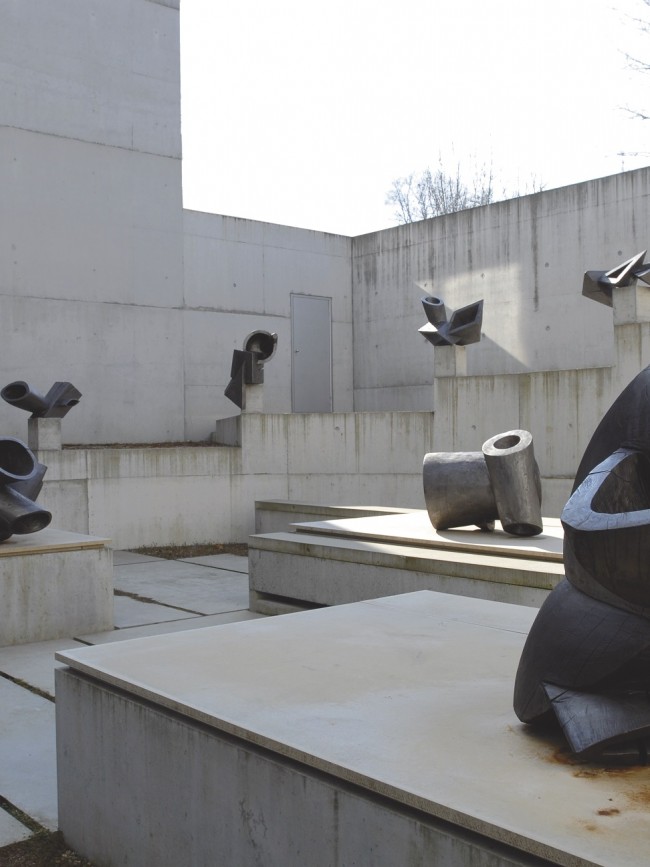Ausstellungsansicht Innenhof Museum Franz Gertsch
Exhibition view Museum Franz Gertsch
Rising Elements, The external form of emptiness, Passages
Foto: Thomas Gerber, Burgdorf
© Max Roth
Max Roth
Monolithic Sculptures
15.04.2007 – 28.10.2007
The Shape of Emptiness | Monolithic Sculptures by Max Roth
When viewing the more recent wood sculptures by Max Roth (born in Berne in 1954), one’s gaze feels its way along the material wooden form. Hands are also welcome to try this, according to the sculptor (although one does run the risk of being left with black hands). In this interplay of the visual and tactile senses, it becomes clear why we determine our environment according to corporeal and material dimensions. They are palpable and therefore, at least potentially, “graspable. However, generally no further attention is given to that which usually dispenses with the accessible materiality of one of our senses. In these wood sculptures, Roth addresses himself to precisely this emptiness. “What we see is only the shell of the form. The actual form is the space within these shell-like entities.
Over time, due to the Bernese artist’s interest in basic principles rather than in the concrete, his sculptures have taken on an increasing degree of abstraction. Heads have developed from sculptures of the whole body. Here, he was not interested in the expressionist character but in the symbolic character. As a result, the last, already reduced, indications of human features were discarded and heads emerged as pots. In Mexico, the well-travelled artist fi nally discovered a pre-Columbian form that served potters as a mould when making clay pots without a wheel. This mould was the interior form, the empty space within the pots. This find inspired Roth to conceive of his sculptures as shells around a form. He shaped the cavity with a motor saw. The forms began to approach the shape of their shell. However, as Max Roth states, “the outer form is always a result of the inner form, this actually non-existent form.
It would be more correct to write of his sculptures as monoxylic. The term monolithic has a more familiar ring and is used for sculptures hewn from a single block of stone. The reason that Roth uses it for wood, not stone, sculptures has its origins perhaps in the affi nity the artist feels with the monolithic architecture of India. This architecture, for instance the temple Kailasa in Ellora, has been chiselled from a single rock although it gives the impression of having been constructed from individual blocks of stone, emulating the architecture of the times. Roth’s wood sculptures also appear to be composed of several parts but are actually made from a single tree trunk.
In other exhibitions, the artist has juxtaposed his sculptures with photographs of such Indian “monolithic architecture. In this exhibition, he uses photographs of glaciers. Roth perceives them as enormous monolithic sculptures. Through the motion, the fl owing, of the ice mass, cracks are created in the structure of the glacier. Rain, wind and sun shape these cavities into sculptural systems in which the artist recognizes a great similarity to his own sculptures. Furthermore, due to the year-by-year accumulation of layers of snow, the glaciers display a similar structure to that of tree rings. In their turn, after being treated with graphite, the sculptures exhibited here approximate the colour of stone without completely concealing or relinquishing their wood structure.
The sculptures of Max Roth do not close themselves off from the viewer; do not hide any secrets that could not be deciphered. Their ambivalence, however, be it in their materiality or in their form and spatial comprehensibility, disrupts the viewer’s perceptual conventions and makes emptiness tangible.

